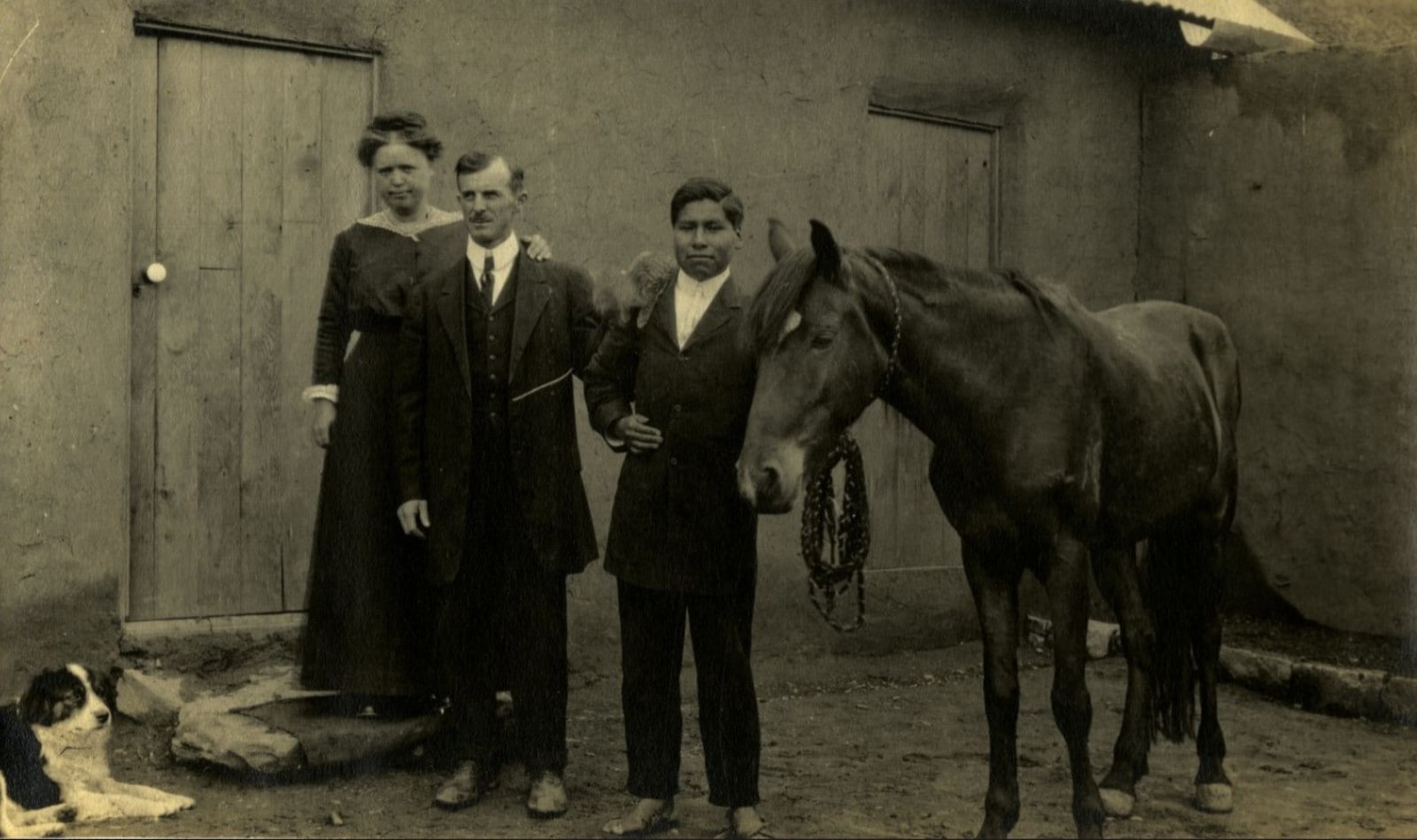
Clinton Achenbach was an American missionary who served during the early phases of Adventist work in the Spanish-speaking lands of Peru, Puerto Rico, Venezuela, Cuba, and the Dominican Republic.
Clinton, the eldest child of William and Valeria Achenbach, was born in Mount Aetna, Pennsylvania, on April 11, 1875. He attended a local public school before enrolling in South Lancaster Academy in Massachusetts in 1894. After he graduated, he moved to Battle Creek, Michigan, where he was employed at the Battle Creek Sanitarium before taking the nurses training course there. It was there that Clinton met Minnie Branson, who had a similar background and was also a nurse trainee in the Sanitarium. They married on February 6, 1903.
Medical, canvassing, and ministerial work in the South
A call to medical evangelism in the Florida Conference started a united career for the Achenbachs that developed in the homeland and overseas mission fields. In 1904 the couple, joined by Clinton’s younger sister, Maggie, pioneered an enterprise that combined hydrotherapy treatment rooms with a vegetarian café. This endeavor gave rise to the establishment of the Florida Sanitarium in 1908, later known as Florida Hospital, and most recently AdventHealth Orlando.
In 1907 Clinton began two years as missionary field agent in the Florida Conference, a role that placed him in charge of a team of canvassers. He urged American church members to escape the cold Northern winters and spend the season selling books in Florida. He was given a ministerial license in 1909 and ordained to the gospel ministry by General Conference president Arthur G. Daniells in October 1910. Two years later Achenbach was elected president of the South Carolina Conference, a position he held for two years. To better equip himself for ministry, he studied at Washington Missionary College in Takoma Park, Maryland, during the 1914-1915 academic year.
Medical mission in Peru
Clinton and Minnie received an appointment to join Ferdinand and Ana Stahl at the Lake Titicaca Indian Mission in the highlands of Peru in 1915. There was a certain romantic aura about this mission station, for it was the home of the ancient Inca culture, remote and picturesque. The lake itself was the highest navigable body of water in the world. The extreme altitude of 12,500 feet (3,800 meters) made it a challenging environment in which to work.
The Achenbachs departed from New Orleans on July 10, 1915, negotiating the relatively new Panama Canal and sailing down the coast to Callao and Mollendo. The landing was so steep that a chair had to be lowered, and each passenger was hoisted by a derrick onto terra firma. They journeyed partway into the mountains to acclimatize at Arequipa, and remained there for several months to learn some Spanish before ascending farther to Puno on Lake Titicaca.
The mission station was located near Puno on the northwestern shore amid hundreds of grass-thatched homes. It had been established a decade earlier and enjoyed a good reputation. Soon after arrival, Clinton reported that Sabbath School attendance was approximately 700. The clinic, conducted in a special building on site, treated up to 20 patients each day. Clientele included Spanish nationals, priests, and Inca Indians, who were known to travel long distances for medical treatment.
Ferdinand was also a trained nurse. He and Clinton united their efforts, at times performing such surgical procedures as removing eye tumors or operating on a gangrenous foot. A small fee was asked for each treatment. On some occasions Clinton would travel several kilometers away from his headquarters to treat extreme cases.
The good influence of the medical work generated requests from the nationals for mission outposts to be established. The first was in 1918 when a school for 85 students was opened at Titilaka on the lakeshore south of Puno. That same year, Raquel, Clinton and Minnie’s only child, was born.
Inter-American missions
Poor health made it necessary for the Achenbachs to return to the United States in early 1920. While recuperating in the homeland, Clinton ministered in the Southeastern Union Conference for six months and was then appointed director of the Porto (Puerto) Rican Mission. During his three-year term (1920-1923) the number of churches grew from 10 to 15 and the baptized membership increased from 486 to 629 individuals. He nurtured five church schools and established Colegio Adventista, a training school located in the mountainous region of Aibonito. Two other church schools were constructed in Santo Domingo, Dominican Republic, then a fledgling territory within the Porto Rican Mission.
From Puerto Rico Clinton transferred to be superintendent of the Venezuela Mission, a smaller entity of two churches and a membership of 84 believers. He continued in leadership roles in Spanish-speaking countries, next as superintendent of the Cuban Mission, then as superintendent of the Santo Domingo Mission. The latter region was particularly difficult for Seventh-day Adventists to make any progress. The earliest converts were imprisoned for their faith, but the Achenbachs’ church schools reduced prejudice. The government began to realize that the mission was beneficial and deserved a place in their society.
Final years Clinton and Minnie furloughed in the United States for a brief time in 1928, then returned to Puerto Rico. After six more years of evangelistic and pastoral labor, poor health again compelled them home in 1934. Clinton suffered a stroke while attending the 1934 Autumn Council held in Battle Creek, Michigan, followed by a second stroke that ended his life on March 19, 1935, at age 59. He was laid to rest in the Washington National Cemetery in Maryland. Minnie remained in the area and enjoyed many more years, passing away in 1961. She rests in the same cemetery.